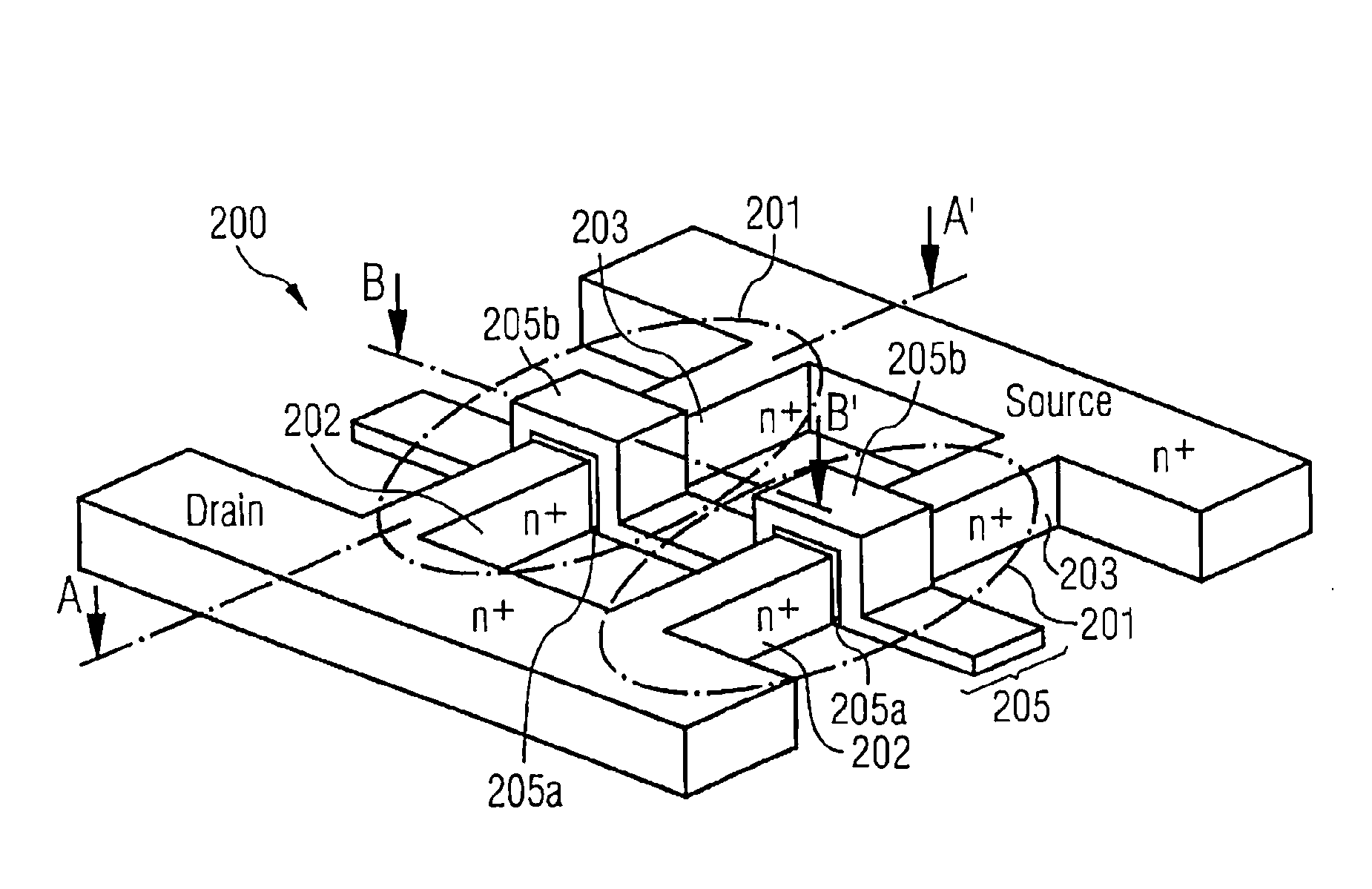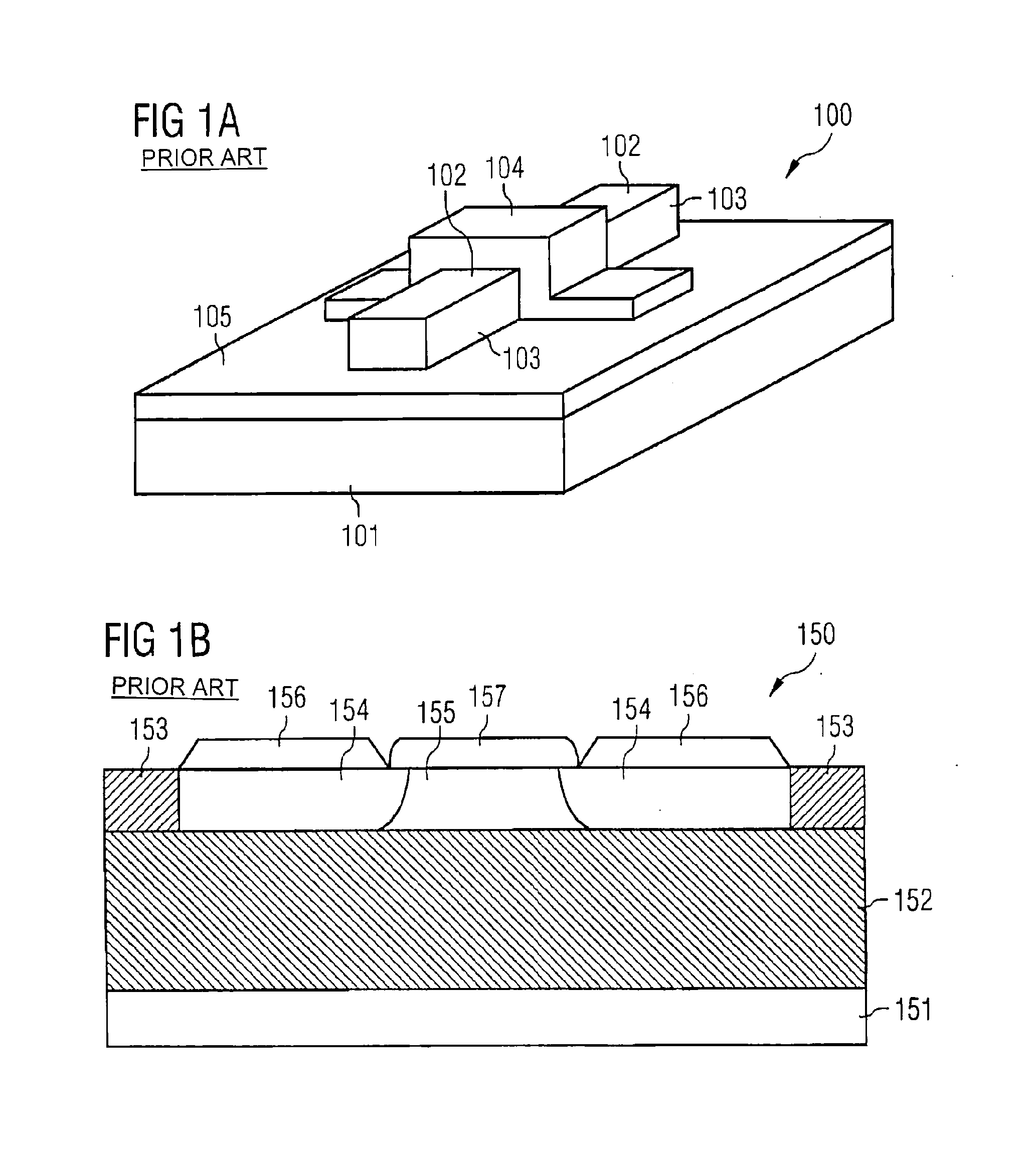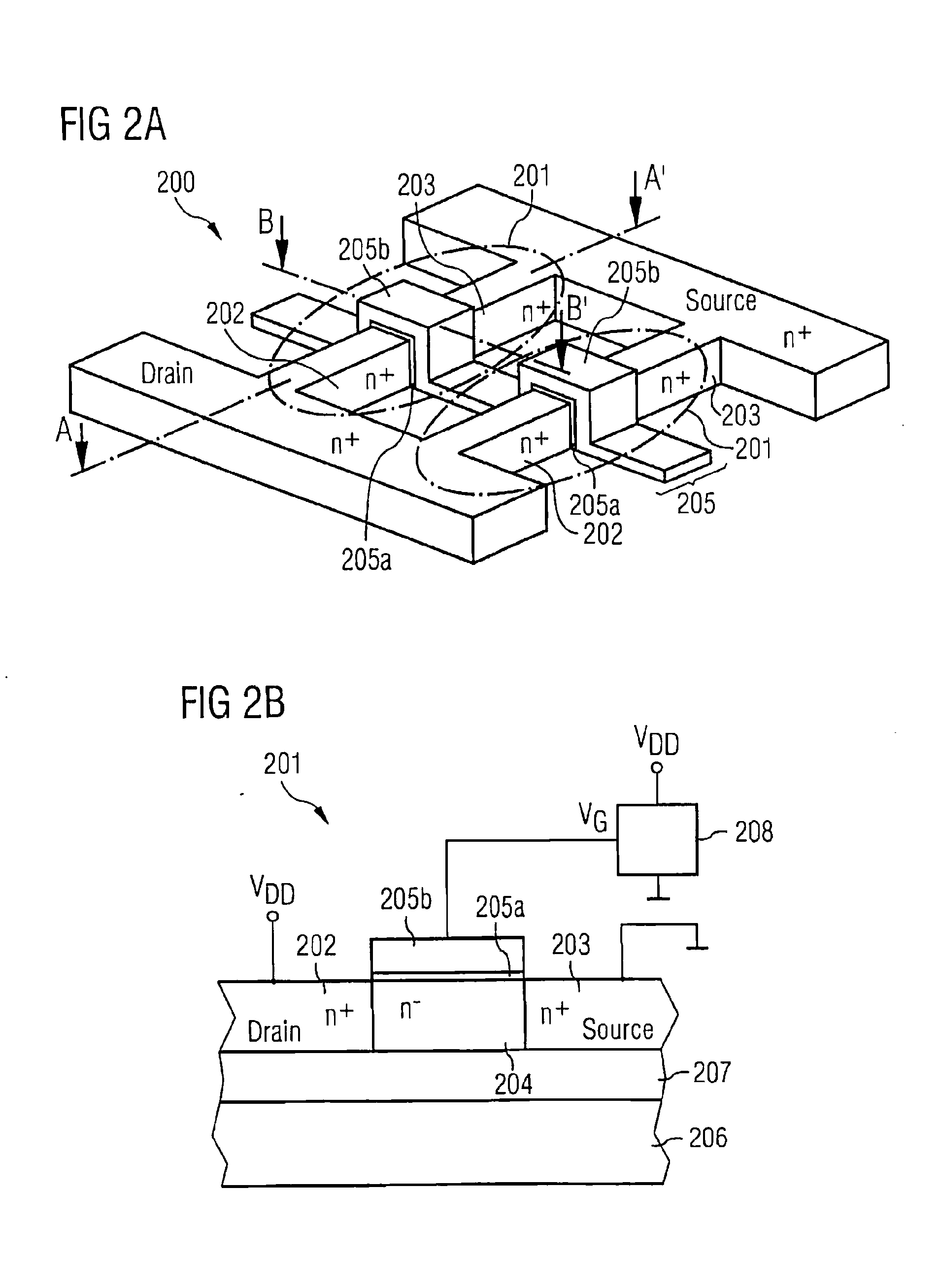Electrostatic discharge protection element
a protection element and electrostatic discharge technology, applied in the direction of semiconductor devices, electrical equipment, semiconductor/solid-state device details, etc., can solve the problems of high intrinsic susceptibility, poor thermal conduction of devices, and damage to one or more electronic components of circuits, and achieve the effect of increasing the robustness of the driver transistor, high resistance and effective protection
- Summary
- Abstract
- Description
- Claims
- Application Information
AI Technical Summary
Benefits of technology
Problems solved by technology
Method used
Image
Examples
Embodiment Construction
[0099]FIG. 2A shows a device 200 for protection against electrostatic discharges in an electrical circuit with two gate controlled fin resistance elements 201 formed as fin junction field effect transistors (FinJFET) in accordance with one exemplary embodiment of the invention. The gate controlled fin resistance elements 201 have a fin structure, having in each case a heavily n doped (n+ doped) first connection region 202, a heavily n doped (n+ doped) second connection region 203 and also a weakly n doped (n− doped) channel region 204 formed between the first connection region 202 and the second connection region 203, the channel region 204 being concealed by a gate region or gate 205 formed over the side areas and the upper face of the channel region 204, cf. FIG. 2B.
[0100]The fin structures of the gate controlled fin resistance elements 201 have for example a length of between 10 nm and 10 μm, and a width of between 5 nm and 50 nm, and a height of between 5 nm and 200 nm.
[0101]The...
PUM
 Login to View More
Login to View More Abstract
Description
Claims
Application Information
 Login to View More
Login to View More - R&D
- Intellectual Property
- Life Sciences
- Materials
- Tech Scout
- Unparalleled Data Quality
- Higher Quality Content
- 60% Fewer Hallucinations
Browse by: Latest US Patents, China's latest patents, Technical Efficacy Thesaurus, Application Domain, Technology Topic, Popular Technical Reports.
© 2025 PatSnap. All rights reserved.Legal|Privacy policy|Modern Slavery Act Transparency Statement|Sitemap|About US| Contact US: help@patsnap.com



